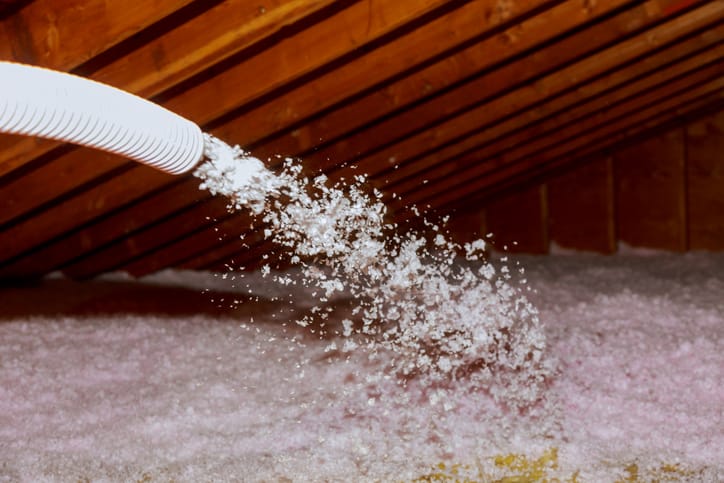The two main least-expensive and most commonly used residential insulation materials is cellulose and fibreglass. Unless you opt for spray foam, then the insulation choices normally come down to cellulose and fibreglass. So, what are the advantages and disadvantages of each of these insulation materials? How are they similar and how are they different from each other? At first glance, they seem quite different. However, these two types of materials wouldn’t be competing for the same share of the housing insulation market of they weren’t in some way alike.
Cellulose installation advantages and disadvantages
Advantages
- It is made from paper; cellulose helps in reducing paper waste through recycling of the material for insulation
- Cellulose is treated with a boric acid that helps it become more flame resistant, rejecting mould and repelling insects
- It is sometimes treated with an acrylic binder that prevents R-Value degeneration over time
- It has a higher R-value per inch in comparison to it close competitor fibreglass (R-3.2 – R-2.2 per inch)
- Cellulose is less of a health risk compared to fibreglass
Disadvantages of Cellulose
- Its installation costs are higher
- Cellulose is known to create a massive cloud of dust when it is installed, meaning breathing apparatus is required if you are considering a large installation.
- Dry blown cellulose will characteristically settle and sag in place reducing its R-value.
- As a recycled paper product, cellulose is prone to absorb moisture that can cause wood rot and mould. Wet blown cellulose is also subject to similar contamination too.
Advantages and Disadvantages of Fiberglass
Advantages
- It is very effective as an insulator but inexpensive on the pocketbook
- This type of insulation material will not shrink over time
- It is normally supplied in sealed batts that are wrapped in a plastic film to prevent health risks
- Its plastic film wrap also adds up as a moisture barrier
- Fibreglass insulation is 100 percent flame resistant and will not burn
- Most of the fibreglass insulation is normally made with recycled material, and due to that, it reduces the carbon footprint.
- This type of insulation comes in two types of densities, medium and high which translates into an R-11 and R-15 for a standard 2X4 wall.
- Fibreglass insulation material has no nutritional value for insects, and less likely to get attacked by them.
Disadvantages
- It is important for those working with this equipment to wear protective clothing. This is because the silvers of insulation can be inhaled and get stuck on the skin.
- In case you are not used to sealing batts, fibreglass insulation will require a vapour barrier during its insulation phase
- Blankets of fibreglass normally have trouble sealing ceiling spaces and walls effectively
- In case the silver of fibreglass is inhaled, it could cause lung disease over time
- Depending on the fibreglass product that you will be using for your insulation, it could contain formaldehyde which is a cancer-causing agent
- Over an extended period, fibreglass will settle and sag reducing its R-Value.
Both fibreglass and cellulose are the two most inexpensive insulation products that you could use. Fibreglass is perhaps the most common product available in the market for insulation outpacing its close competitor cellulose by 50-1. Both of these insulation materials share common characteristics, and both of them are directly competitive in the residential insulation market offering distinct options when deciding what product to pick from the two.
When making a product choice for your attic insulation needs, it’s important that you contact a professional for their advice. This is because each product works in different applications and no two products are similar. You will also need to take into consideration the weather in your area, and the lifestyle that you need to help you make your buying decisions simpler.

